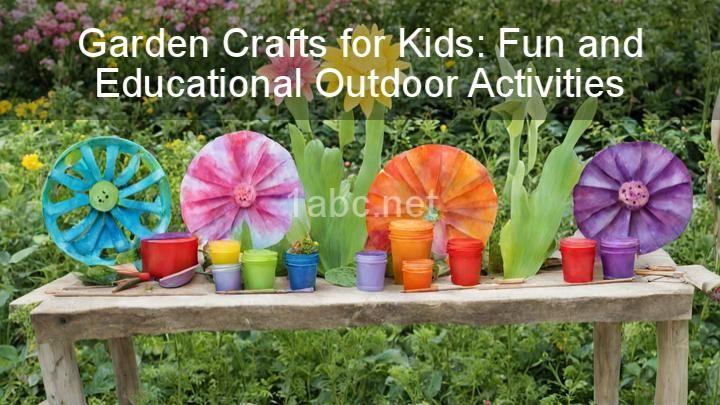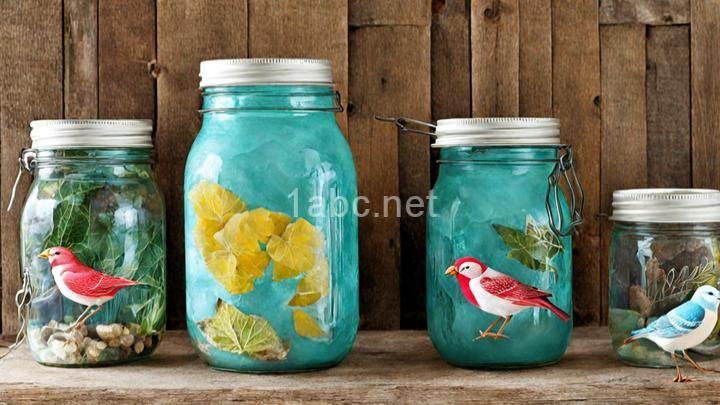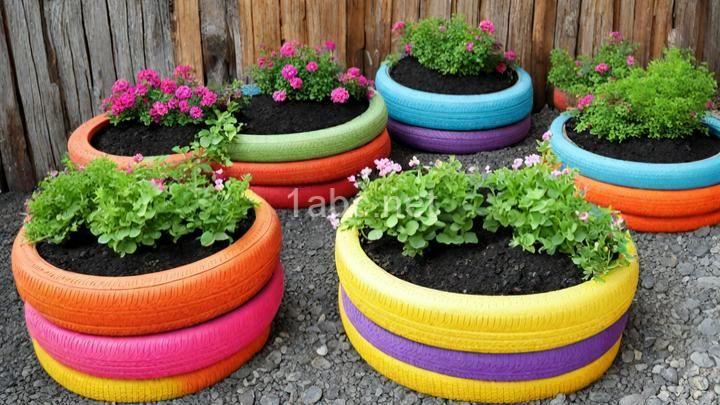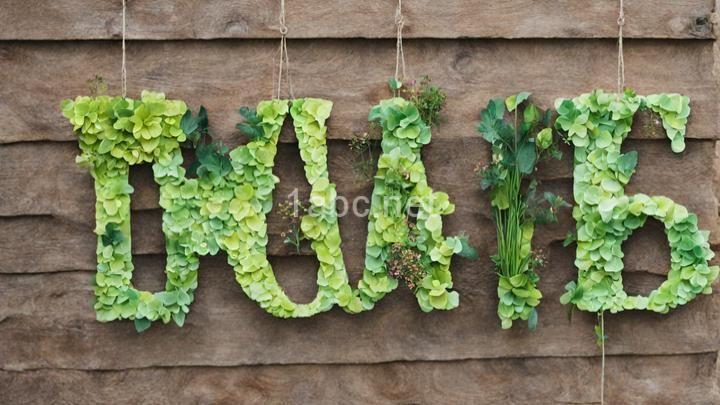Garden Crafts for Kids: Fun and Educational Outdoor Activities

Introduction:
Welcome readers to the exciting world of garden crafts for kids! In today's digital age, it's more important than ever to encourage children to step away from screens and experience the wonders of the natural world. Garden crafts provide the perfect opportunity to engage kids in hands-on learning and foster a love for nature. So, grab your gardening tools and let's dive into the world of garden crafts!
Section 1: Getting Started in the Garden
Gardening offers a multitude of benefits for kids. It teaches them patience as they wait for seeds to sprout and plants to grow. It instills a sense of responsibility as they care for their plants, watering them and ensuring they receive enough sunlight. Most importantly, gardening allows children to connect with nature and develop a deep appreciation for the environment.
To get started, you'll need a few essential gardening tools suitable for children. Child-sized gloves, a small spade, a watering can, and a trowel are all great options. These tools are not only safe and easy to handle, but they also make kids feel like real gardeners.
When it comes to selecting a gardening space, consider your available options. If you have a backyard, set aside a plot where kids can plant and tend to their own garden. If space is limited, container gardening on a balcony or patio can be just as rewarding. Regardless of the size of your gardening space, the key is to make it accessible and enjoyable for kids.
Section 2: Easy DIY Planters
Making planters is a fantastic way to introduce kids to the world of gardening and upcycling. Gather materials such as tin cans, plastic bottles, or old shoes, and transform them into unique planters. Not only will this teach kids about recycling, but it will also spark their creativity.
To create a tin can planter, start by ensuring it is clean and free of sharp edges. Help your child punch drainage holes in the bottom using a hammer and nail. Fill the can with potting soil and plant the seeds or seedlings. Remember to water the plants regularly and watch as they grow!
Plastic bottles can be transformed into self-watering planters. Cut the bottle in half and invert the top portion into the bottom half, creating a reservoir for water. Fill the bottom half with water and the top half with soil and plants. The plants will draw water from the reservoir, ensuring they stay hydrated.
Encourage your child to personalize these planters using paint or other decorations. They can add colorful designs, stickers, or even draw faces on their creations. This personal touch will make gardening even more enjoyable for them.
Section 3: Nature-inspired Crafts
Nature-inspired crafts allow children to engage with the natural world in a creative way. These crafts incorporate elements found in the garden, such as leaves, flowers, or rocks. They not only encourage creativity but also provide valuable learning experiences.
Pressed flower art is a wonderful craft that allows kids to preserve the beauty of flowers. Help your child collect flowers with flat petals, such as daisies or pansies. Place the flowers between sheets of parchment paper and press them under heavy books for a few weeks. Once they are dry, your child can arrange the pressed flowers on paper or create beautiful bookmarks.
Leaf mobiles are another great craft idea. Collect a variety of leaves and help your child paint them in vibrant colors. Once dry, attach them to a string or branch and hang the mobile in the garden. As the wind blows, the leaves will dance and create a beautiful display.
Rock painting is a simple yet enjoyable craft for kids. Help them gather smooth rocks and provide them with acrylic paints and brushes. Encourage them to paint fun designs or create rock creatures. These painted rocks can then be used as garden decorations or even as paperweights.
Homemade bird feeders are a fantastic way to attract birds to your garden while teaching kids about wildlife conservation. Help your child make a bird feeder using materials like pinecones, peanut butter, and birdseed. Hang the feeder in a tree or attach it to a window, and watch as birds flock to enjoy the tasty treat.
Section 4: Growing Vegetable Patch
Growing a vegetable patch is an excellent educational experience for kids. It teaches them about the food they eat and where it comes from. Involve your child in every step of the process, from selecting the seeds to harvesting the vegetables.
Start by choosing vegetables that are easy to grow and suitable for small gardens or containers. Cherry tomatoes, lettuce, herbs like basil or mint, and radishes are all great options. These vegetables have a short growing period and are perfect for impatient little gardeners.
Prepare the soil by removing any weeds and loosening it with a garden fork or trowel. Allow your child to help with this process, ensuring they understand the importance of healthy soil for plant growth. Plant the seeds according to the instructions on the packet and water them regularly.
Teach your child about the importance of watering and the signs of under or overwatering. Encourage them to observe their plants closely and look for any pests or diseases. Introduce organic pest control methods, such as companion planting or using natural insect repellents, to protect both the plants and the environment.
As the vegetables grow, involve your child in the harvesting process. Let them pick the ripe vegetables and teach them how to handle them carefully. Use the harvested produce in delicious recipes, allowing your child to enjoy the fruits of their labor.
Section 5: Scavenger Hunts and Nature Games
Scavenger hunts and nature games are excellent ways to make outdoor time more engaging and interactive for children. These activities encourage exploration, observation skills, and a deeper connection with nature.
Tailor scavenger hunts to different age groups and themes. For younger children, create a list of items they can find in the garden, such as leaves, flowers, or insects. For older children, challenge them to find specific types of plants or identify different bird species.
Nature-themed games like "I Spy," "Plant Bingo," or "Bug Hunt" can also be great fun. "I Spy" encourages children to observe their surroundings and identify specific objects in the garden. "Plant Bingo" involves creating bingo cards with different plants and checking them off as they are found. "Bug Hunt" challenges kids to search for and identify various insects and learn about their habitats.
To enhance these activities, provide materials such as binoculars, magnifying glasses, or printed game cards. These tools will allow children to observe plants and animals up close and make their outdoor adventures even more exciting.
Conclusion:
Garden crafts and outdoor activities offer a multitude of benefits for kids. They provide hands-on learning experiences, foster creativity, and cultivate a love for nature. By engaging in garden crafts, children develop patience, responsibility, and a deeper connection with the environment.
So, start implementing these ideas and spend quality time in nature with your children. Watch as their excitement grows with each sprouting seed, painted rock, or discovery in the garden. Create memories that will last a lifetime and instill a lifelong love for the natural world in your little ones. Happy gardening!
FREQUENTLY ASKED QUESTIONS
What is Garden Crafts for Kids: Fun and Educational Outdoor Activities?
"Garden Crafts for Kids: Fun and Educational Outdoor Activities" is a book that is specifically designed to engage children in creative and educational activities in the garden. It offers a variety of fun projects that children can undertake while being outdoors, allowing them to explore nature while also learning new skills.
The book provides step-by-step instructions for various craft projects using materials commonly found in gardens. These projects often involve using natural materials such as flowers, leaves, and rocks, and they aim to encourage creativity, imagination, and problem-solving skills.
Some examples of the activities included in the book may include making flower crowns, creating nature-inspired art, constructing bird feeders, designing miniature fairy gardens, and planting and maintaining their own vegetable or flower garden.
Overall, "Garden Crafts for Kids: Fun and Educational Outdoor Activities" is an excellent resource for parents, teachers, or anyone who wants to engage children in hands-on learning experiences in nature. It combines the joy of crafting with the benefits of spending time outdoors, fostering a deeper appreciation for the natural world and encouraging children to connect with their surroundings.
What kind of activities are included in Garden Crafts for Kids: Fun and Educational Outdoor Activities?
The book "Garden Crafts for Kids: Fun and Educational Outdoor Activities" includes a variety of engaging activities for children to enjoy in a garden setting. Some of these activities include:
- Making seed bombs to encourage the growth of flowers and plants.
- Creating colorful wind chimes using natural materials like sticks and shells.
- Designing and building bird feeders to attract and support local bird populations.
- Crafting garden markers to label different plants and vegetables in the garden.
- Constructing miniature scarecrows to keep pests away from the garden.
- Painting and decorating rocks to create unique garden ornaments.
- Planting a sensory garden with different textures, smells, and tastes.
- Making recycled planters using materials like plastic bottles or tin cans.
These activities not only provide fun and creativity for children but also promote a deeper understanding of nature, gardening, and the environment.
Do I need any special tools or materials to do these activities?
It depends on the specific activities you are referring to. Can you please provide more details or specify which activities you are referring to?




